Intelligent Control of a Distributed Energy Generation System Based on Renewable Sources
Abstract
:1. Introduction
- using a mixed performance criterion, which includes both the cost of the electricity supplied to the local consumers and a component expressing the battery lifetime;
- establishing a fuzzy based solution for the higher level control of the distributed system, which will correspond to the requirements imposed by the use of the mixed performance criterion; and
- obtaining the control solution and the parameters of the appropriate fuzzy controller based on numerical simulation of the hybrid system using plausible scenarios regarding the random evolution of the renewable energy sources and the local network. Within each scenario, the controller parameters are established in order to satisfy the designer requirements regarding the performance criterion components. The final values of the controller parameters are determined on the basis of the values obtained in all scenarios considered in the simulation. Therefore, the controller parameters are not obtained through a real time optimization procedure of the mixed performance criterion because they would be suitable only for a given instance of the mentioned random powers, used in the optimization procedure.
2. Methods
2.1. The Structure of the Distributed Electrical Energy Generation System Based on Renewable Sources
2.2. Modeling the Random Energetic Flows
2.2.1. Modeling of the Power Generated by the Wind Source
- turbulence intensity, I, defined by the equation:where is the turbulence standard deviation,
- turbulence length, Lt, which influences the spectral bandwidth of the time series, .
2.2.2. Modeling the Power Generated by the Solar Energy Source
2.2.3. Modeling the Power Consumed by the Load
2.3. Intelligent Control Algorithms for the Distributed Energy System
2.3.1. Approaches in the Intelligent Control of the Distributed Energy System
- (1)
- Crisp type approach, which uses a simple algorithm for “control situations” recognition. Let us consider the following discrete commands:
- C1: important transfer from the grid to the distributed system ();
- C2: medium transfer from the grid to the distributed system ();
- C3: null transfer between the grid to the distributed system ();
- C4: medium transfer from the distributed system to the grid (); and
- C5: important transfer from the distributed system to the grid ().
- (2)
- Fuzzy type approach, in which the energy state of the system is evaluated in linguistic terms. In this case, the control principle shown above is preserved, but all the variables involved in the system, including the command setting the direction and the magnitude of the energy transfers, are obtained by fuzzy evaluation, and the control law is obtained by means of fuzzy inference.
- testing the system operation in different situations regarding the renewable energy sources. For the distributed system design it is necessary to consider at least two regimes: summer and winter; and
- testing the system operation in two operating modes of the battery: buffer regime—considered as the standard one—and periodic regime, in which the charging and discharging cycles are taking place during the normal operation of the distributed system. These cycles are recommended to increase the battery lifetime.
2.3.2. Prediction of the Random Variables from the Distributed Energy System
2.3.3. Fuzzy Controllers for the Distributed Energy System
- (1)
- Variant 1 of the control algorithms is illustrated in the scheme given in Figure 7. The controller inputs are the components of the vector defined by Equation (7). These variables are scaled using the coefficients , and . The battery voltage, Vb(t), reflects the accumulated energy at the current time t and is calculated in accordance with the simplified model [3] on the basis of the following equation:
- is the power fed into the battery, which has the following components: power produced from sources wind and solar, and , respectively, and the power transferred from the grid, .
- is the power extracted from the battery, equal with the sum of the consumed power into the local network, , and the power transferred into the grid, .
- (2)
- Variant 2 of the control algorithms is implemented using a voltage controller whose scheme is given in Figure 8. The voltage setpoint, which is explicitly provided, may be imposed either at a fixed value, for example 48.5 V, or from a signal generator, which provides a periodically varying ramp with an average value of 48.5 V. Both controllers (Variant 1 and Variant 2) are equivalent to a pseudo Proportional-Derivative type control law with anticipation with respect to the disturbance deficit/surplus energy. The integrative component that is missing is not an important impediment, since in practice the system is always working in a dynamic regime and the battery voltage must be in the vicinity of a value corresponding to the “charged” regime of the battery. The fuzzification of the control error was carried out considering three linguistic terms, with triangular membership functions. The other two inputs and the controller command maintain the same fuzzification as in Variant 1. In addition, the rule table is similar to the previous controller.
2.4. The Performance Criterion for the Distributed Energy System
3. Results and Discussion
3.1. The Multi-Criteria Performance Indicator Evaluation
3.2. An Improved Intelligent Control Algorithm for the Distributed Energy System
4. Conclusions
Acknowledgments
Author Contributions
Conflicts of Interest
References
- Putrus, G.; Bentley, E. Integration of distributed renewable energy systems into the smart grid. Electr. Renew. Energy Syst. 2016, 487–518. [Google Scholar] [CrossRef]
- Gonzalez, A.; Riba, J.-R.; Rius, A. Optimal Sizing of a Hybrid Grid-Connected Photovoltaic-Wind-Biomass Power System. Sustainability 2015, 7, 12787–12806. [Google Scholar] [CrossRef] [Green Version]
- Badea, N.; Epureanu, A.; Ceangă, E.; Barbu, M.; Caraman, S. Functional Design of the mCCHP-RES System. In Design for Micro-Combined Cooling, Heating and Power Systems; Springer-Verlag: London, UK, 2015; pp. 239–335. [Google Scholar]
- Diaz-Gonzalez, F.; Sumper, A.; Gomis-Bellmunt, O.; Villafafila-Robles, R. A review of energy storage technologies for wind power applications. Renew. Sustain. Energy Rev. 2012, 16, 2154–2171. [Google Scholar] [CrossRef]
- Vlad, C.; Barbu, M.; Vilanova, R. Fuzzy Control of an Electrical Energy Generation System Based on Renewable Sources. In Proceedings of the 21st IEEE International Conference on Emerging Technologies and Factory Automation, Berlin, Germany, 6–9 September 2016.
- Li, J.; Fang, J.; Zeng, Q.; Chen, Z. Optimal operation of the integrated electrical and heating systems to accommodate the intermittent renewable sources. Appl. Energy 2016, 167, 244–254. [Google Scholar] [CrossRef]
- Tegou, L.-I.; Polatidis, H.; Haralambopoulos, D.A. Distributed generation with renewable energy systems: The spatial dimension for an autonomous Grid. In Proceedings of the 47th European Regional Science Association (ERSA 2007), Paris, France, 29 August–2 September 2007.
- Kusiak, A.; Verma, A.; Wei, X. Wind turbine capacity frontier from SCADA. Wind Syst. Mag. 2012, 3, 36–39. [Google Scholar]
- Munteanu, I.; Bratcu, A.I.; Cutululis, N.A.; Ceangă, E. Optimal Control of Wind Energy Systems: Toward a Global Approach; Springer: London, UK, 2008. [Google Scholar]
- Vlad, C. Contributions to Automatic Control of Autonomous Renewable Energy Conversion Systems. Ph.D. Thesis, “Dunarea de Jos” University of Galati, Galati, Romania, 2010. [Google Scholar]
- Balan, D.-V.; Torous, C.; Popescu, D.; Balan, D.-B. Search algorithms for the maximum power point on photovoltaic panels. In Proceedings of the 2015 19th International Conference on System Theory, Control and Computing (ICSTCC 2015), Cheile Gradistei, Romania, 14–16 October 2015; pp. 641–645.
- Qazi, S.H.; Mustafa, M.W. Review on active filters and its performance with grid connected fixed and variable speed wind turbine generator. Renew. Sustain. Energy Rev. 2016, 57, 420–438. [Google Scholar] [CrossRef]
- Ouadi, H.; Ait Chihab, A.; Giri, F. Adaptive nonlinear control of three-phase shunt active power filters with magnetic saturation. Int. J. Electr. Power Energy Syst. 2015, 69, 104–115. [Google Scholar] [CrossRef]
- Winkler, G.; Meisenbach, C.; Hable, M.; Meier, P. Intelligent energy management of electrical power systems with distributed feeding on the basis of forecasts of demand and generation. In Proceedings of the 16th International Conference and Exhibition on Electricity Distribution (CIRED), Amsterdam, The Netherlands, 18–21 June 2001.
- Valenciaga, F.; Puleston, P.F. Supervisor control for a stand-alone hybrid generation system using wind and photovoltaic energy. IEEE Trans. Energy Convers. 2005, 20, 398–405. [Google Scholar] [CrossRef]
- Kim, S.-K.; Jeon, J.-H.; Cho, C.-H.; Ahn, J.-B.; Kwon, S.-H. Dynamic Modeling and Control of a Grid-Connected Hybrid Generation System with Versatile Power Transfer. IEEE Trans. Ind. Electron. 2008, 55, 1677–1688. [Google Scholar] [CrossRef]
- Mohod, S.W.; Aware, M.V. Micro Wind Power Generator with Battery Energy Storage for Critical Load. IEEE Syst. J. 2012, 6, 118–125. [Google Scholar] [CrossRef]
- Ahmadi, A.; Venayagamoorthy, G.K.; Sharma, R. Performance of a smart microgrid with battery energy storage system’s size and state of charge. In Proceedings of the 2014 IEEE Symposium on Computational Intelligence Applications in Smart Grid (CIASG), Orlando, FL, USA, 9–12 December 2014; pp. 1–7.
- Ronay, K.; Dumitru, C.D. Management of a Power System Based on Renewable Energy. Procedia Technol. 2014, 12, 693–697. [Google Scholar]
- Mayhorn, E.; Kalsi, K.; Elizondo, M.; Zhang, W.; Lu, S.; Samaan, N.; Butler-Purry, K. Optimal control of distributed energy resources using model predictive control. In Proceedings of the 2012 IEEE Power and Energy Society General Meeting, San Diego, CA, USA, 22–26 July 2012; pp. 1–8.
- Patino, J.; Marquez, A.; Espinosa, J. An economic MPC approach for a microgrid energy management system. In Proceedings of the 2014 IEEE PES Transmission & Distribution Conference and Exposition–Latin America (PES T&D-LA), Chicago, IL, USA, 14–17 April 2014; pp. 1–6.
- Zhang, X.; Bao, J.; Wang, R.; Zheng, C.; Skyllas-Kazacos, M. Dissipativity based distributed economic model predictive control for residential microgrids with renewable energy generation and battery energy storage. Renew. Energy 2016. [Google Scholar] [CrossRef]
- Burton, T.; Sharpe, D.; Jenkins, N.; Bossanyi, E. Wind Energy Handbook; John Wiley & Sons: Indianapolis, IN, USA, 2001. [Google Scholar]
- Diop, A.D.; Ceanga, E.; Retiveau, J.-L.; Methot, J.-F.; Ilinca, A. Real-time three-dimensional wind simulation for windmill rig tests. Renew. Energy 2007, 32, 2129–2290. [Google Scholar] [CrossRef]
- Burton, T. Wind Energy Handbook; Wiley: Chichester, UK, 2011. [Google Scholar]
- Nichita, C.; Luca, D.; Dakyo, B.; Ceanga, E. Large band simulation of the wind speed for real time wind turbine simulators. IEEE Trans. Energy Convers. 2002, 17, 523–529. [Google Scholar] [CrossRef]
- Badea, N.; Barbu, M. Experimental Case Study. In Design for Micro-Combined Cooling, Heating and Power Systems; Springer-Verlag: London, UK, 2014; pp. 337–394. [Google Scholar]
- Zhang, Z.; Song, Y.; Liu, F.; Liu, J. Daily Average Wind Power Interval Forecasts Based on an Optimal Adaptive-Network-Based Fuzzy Inference System and Singular Spectrum Analysis. Sustainability 2016, 8, 125. [Google Scholar] [CrossRef]
- Renani, E.T.; Mohamad Elias, M.F.; Rahim, N.A. Using data-driven approach for wind power prediction: A comparative study. Energy Convers. Manag. 2016, 118, 193–203. [Google Scholar] [CrossRef]
- Ramon-Marin, M.; Sumper, A.; Villafafila-Robles, R.; Bergas-Jane, J. Active power estimation of photovoltaic generators for distribution network planning based on correlation models. Energy 2014, 64, 758–770. [Google Scholar] [CrossRef]
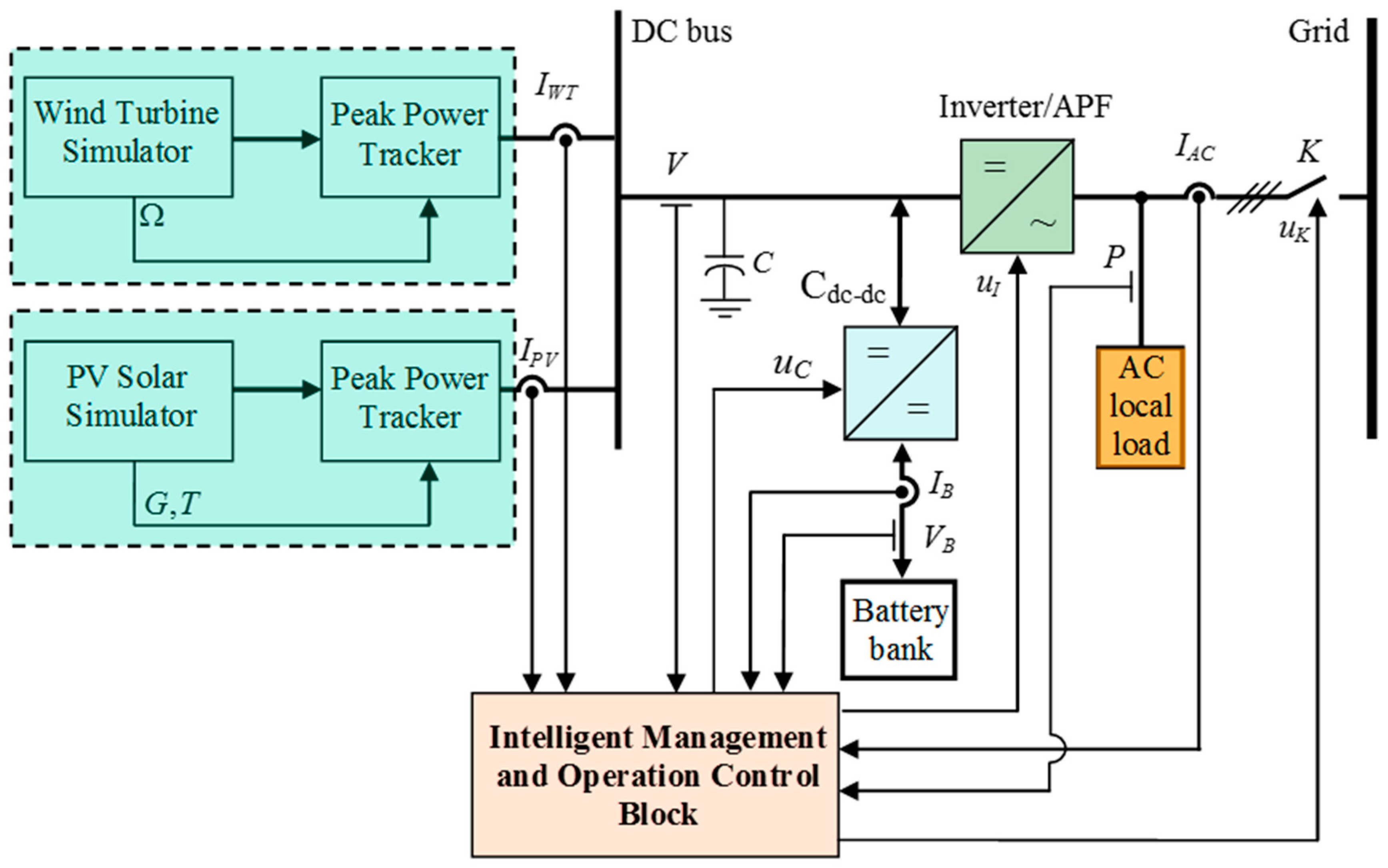

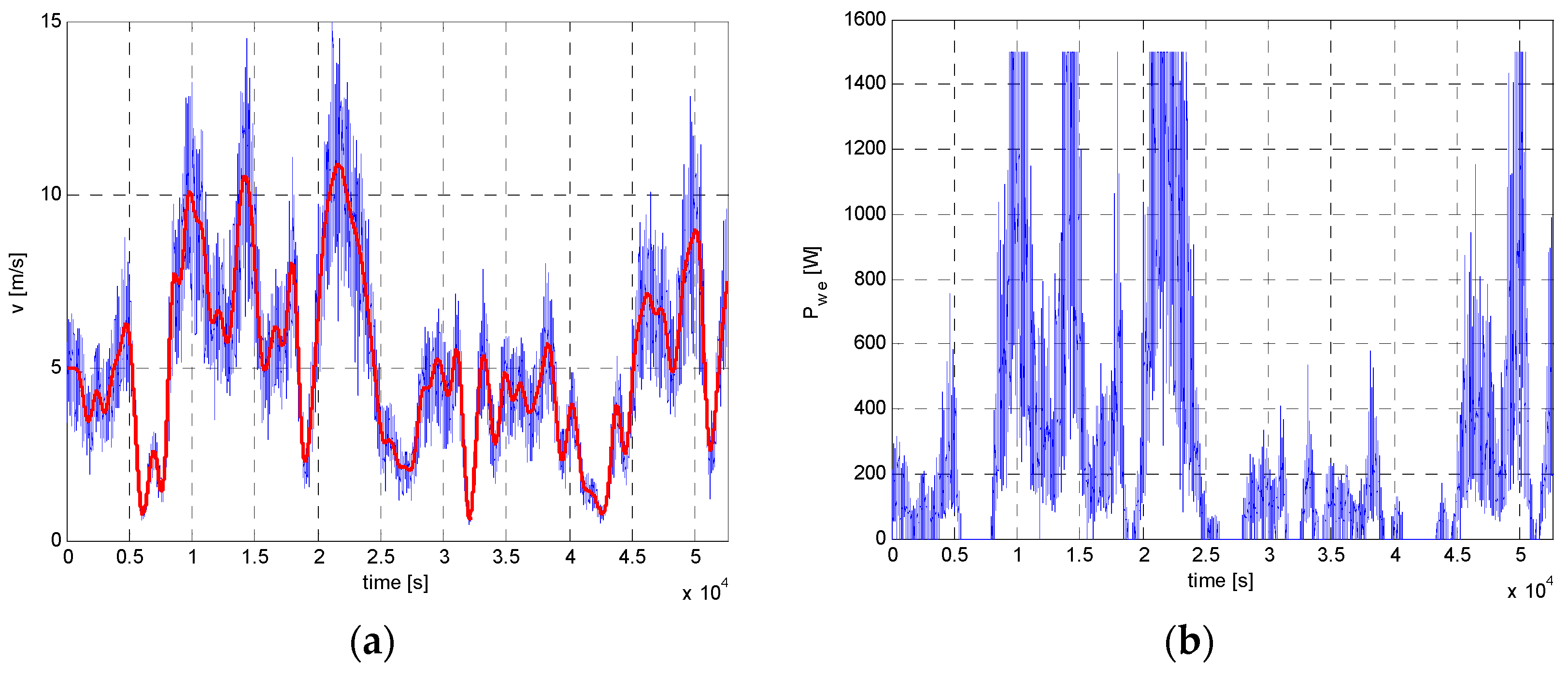
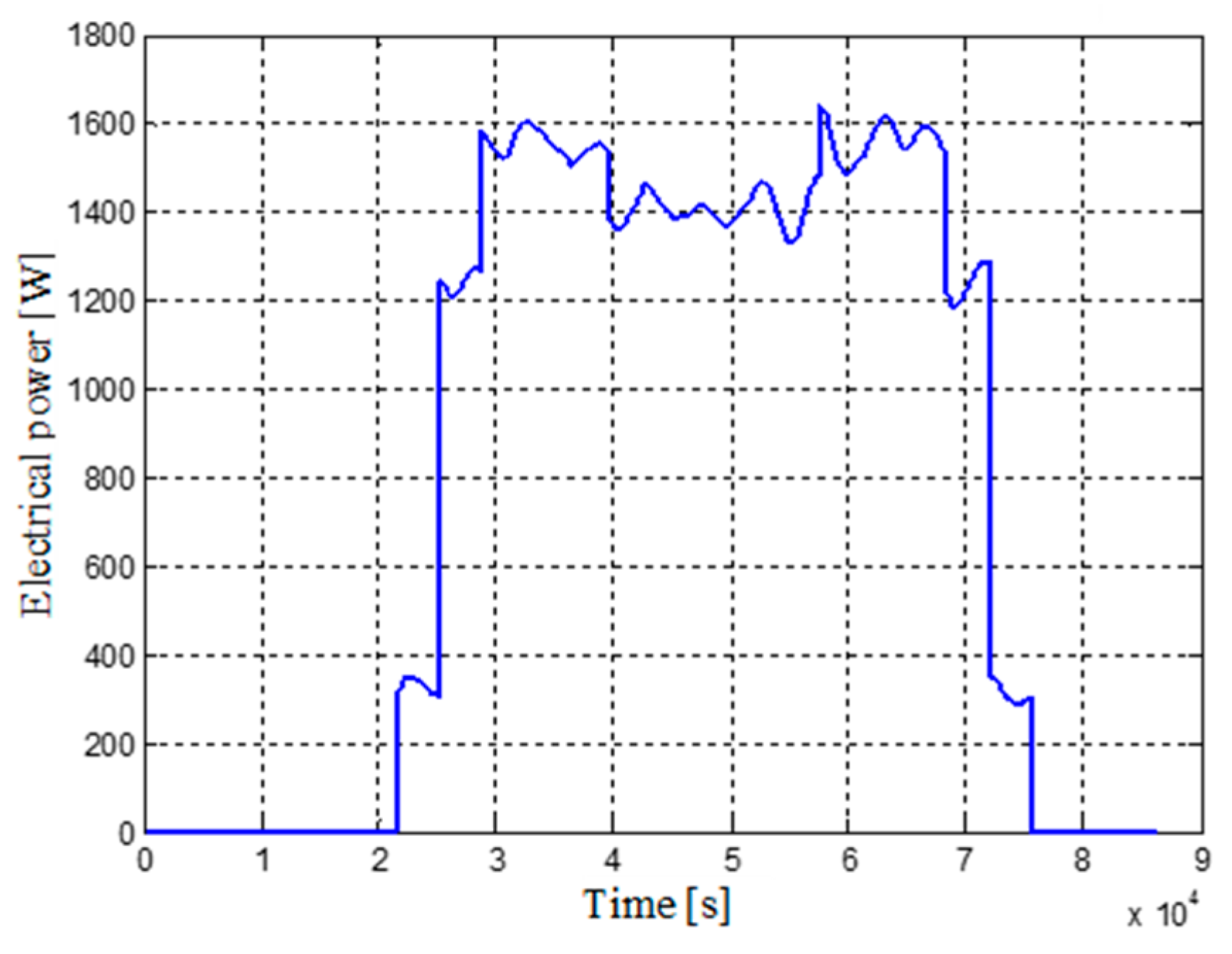

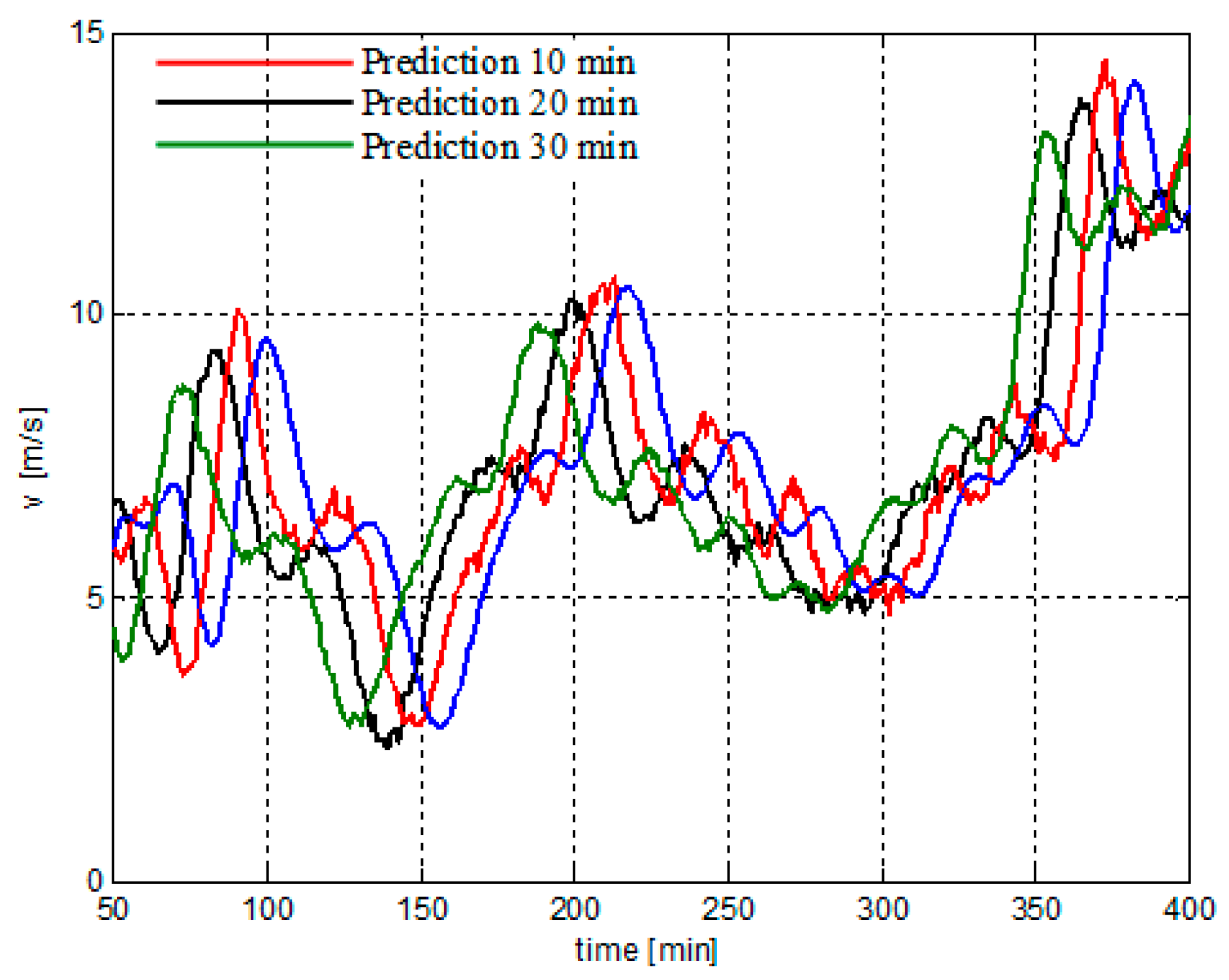

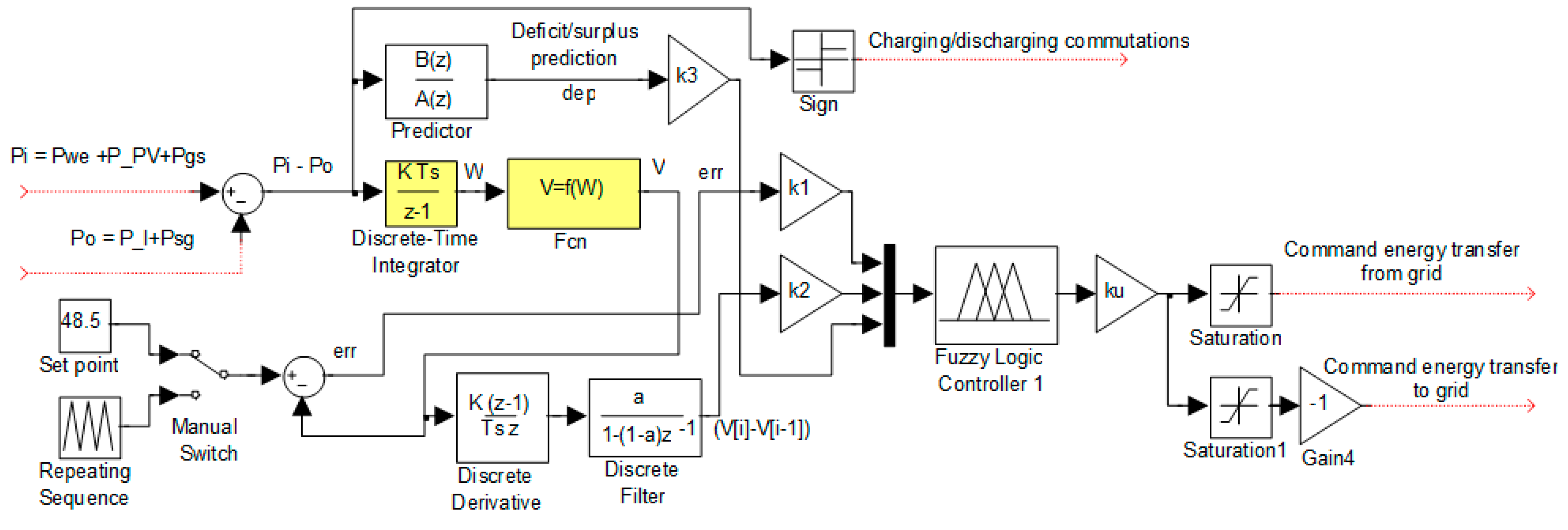
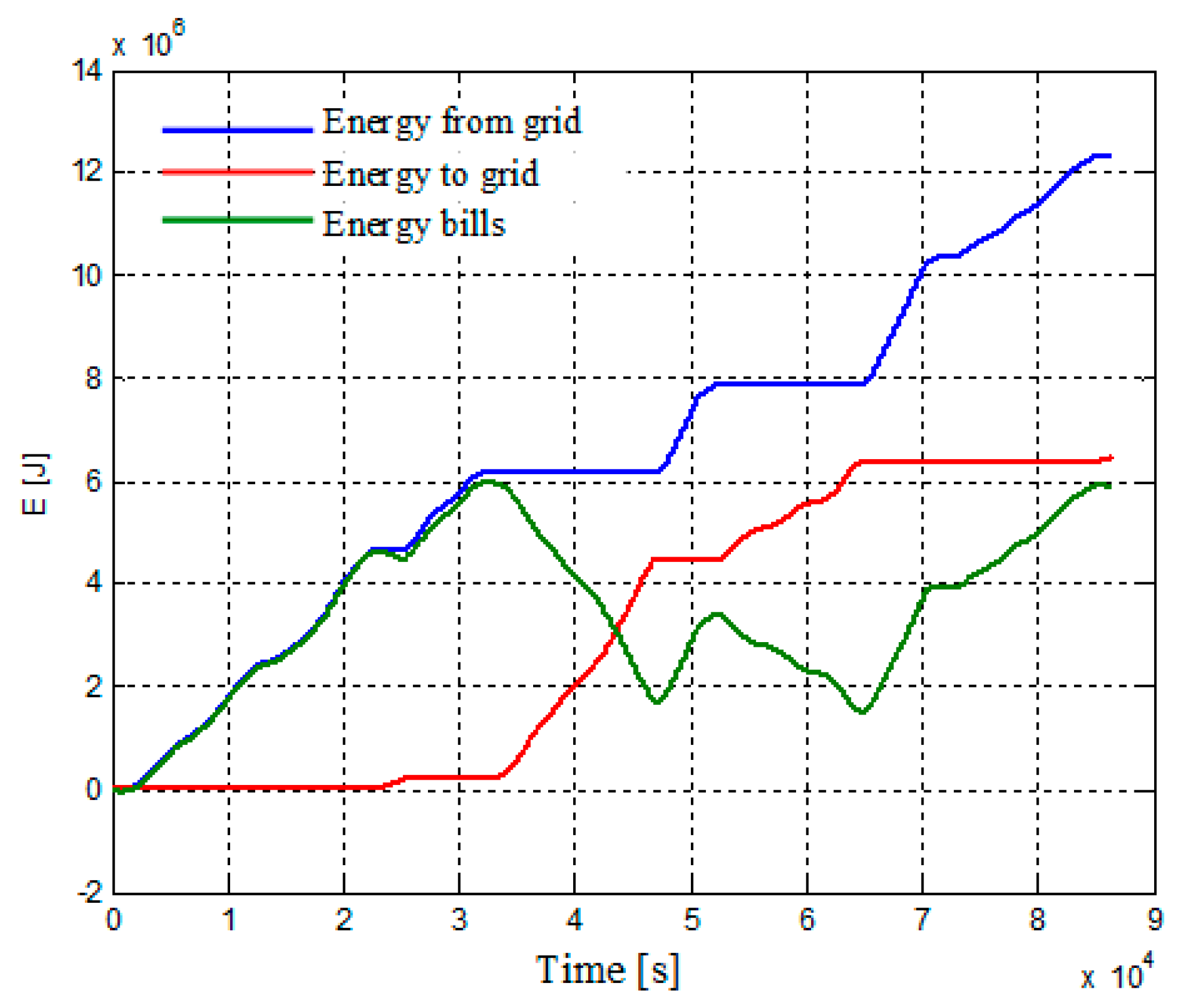
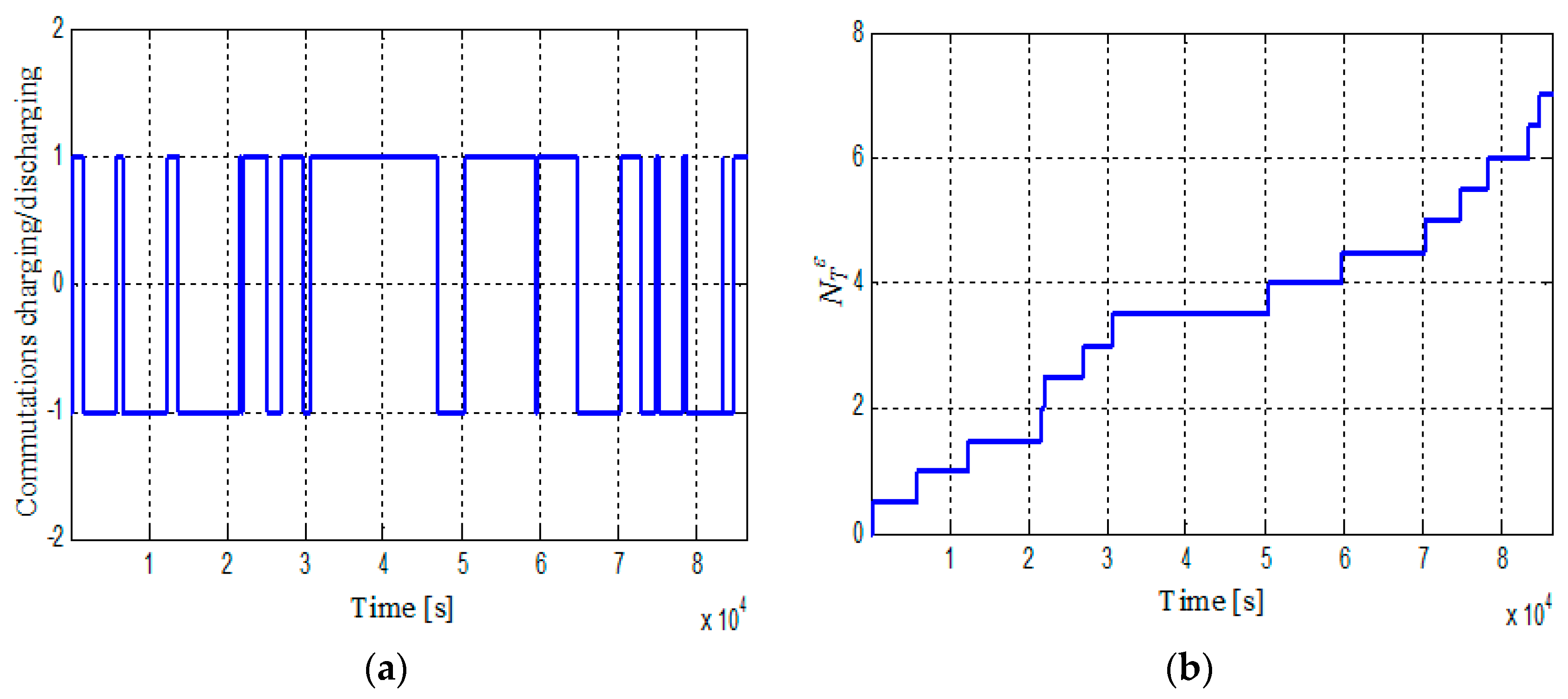
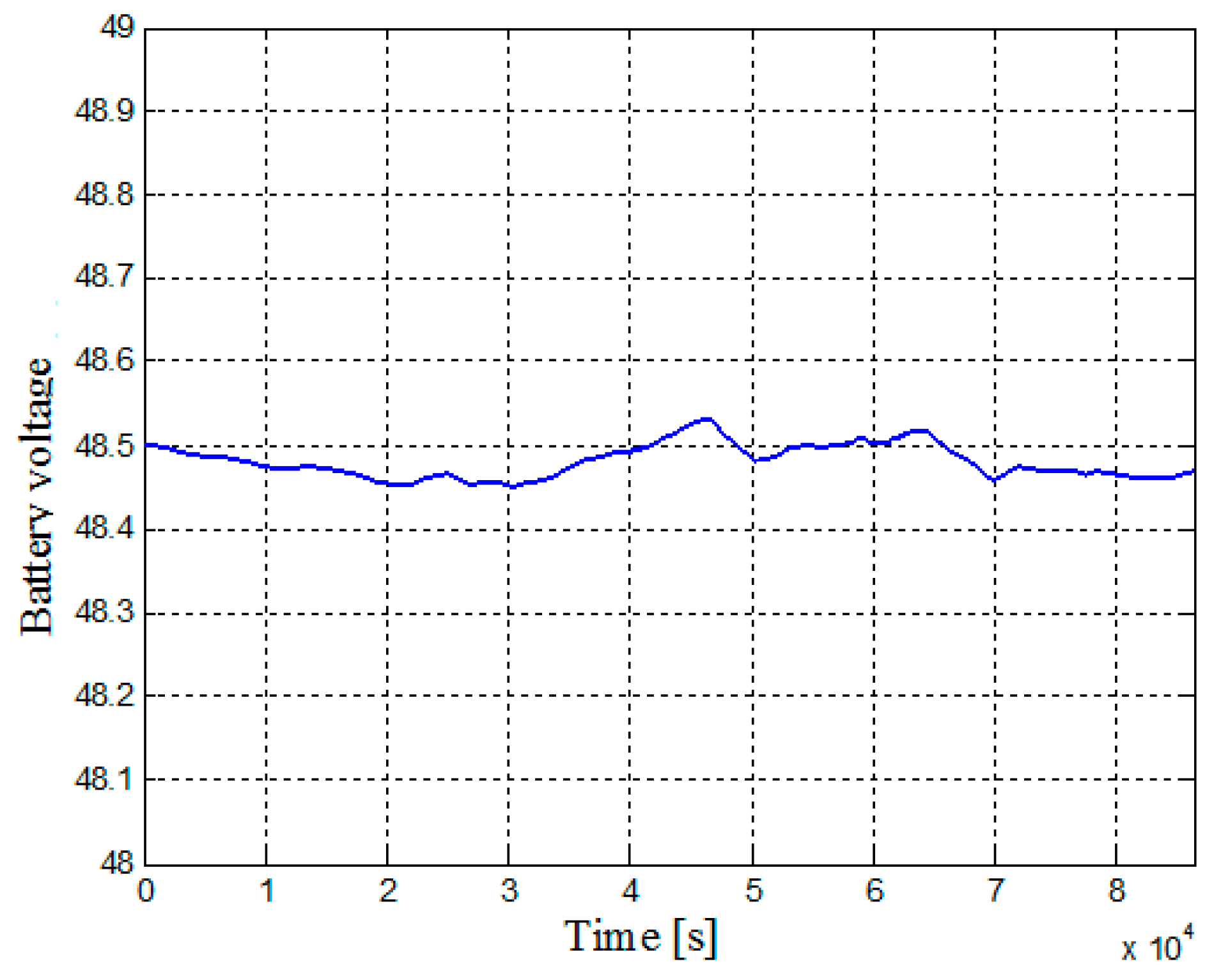

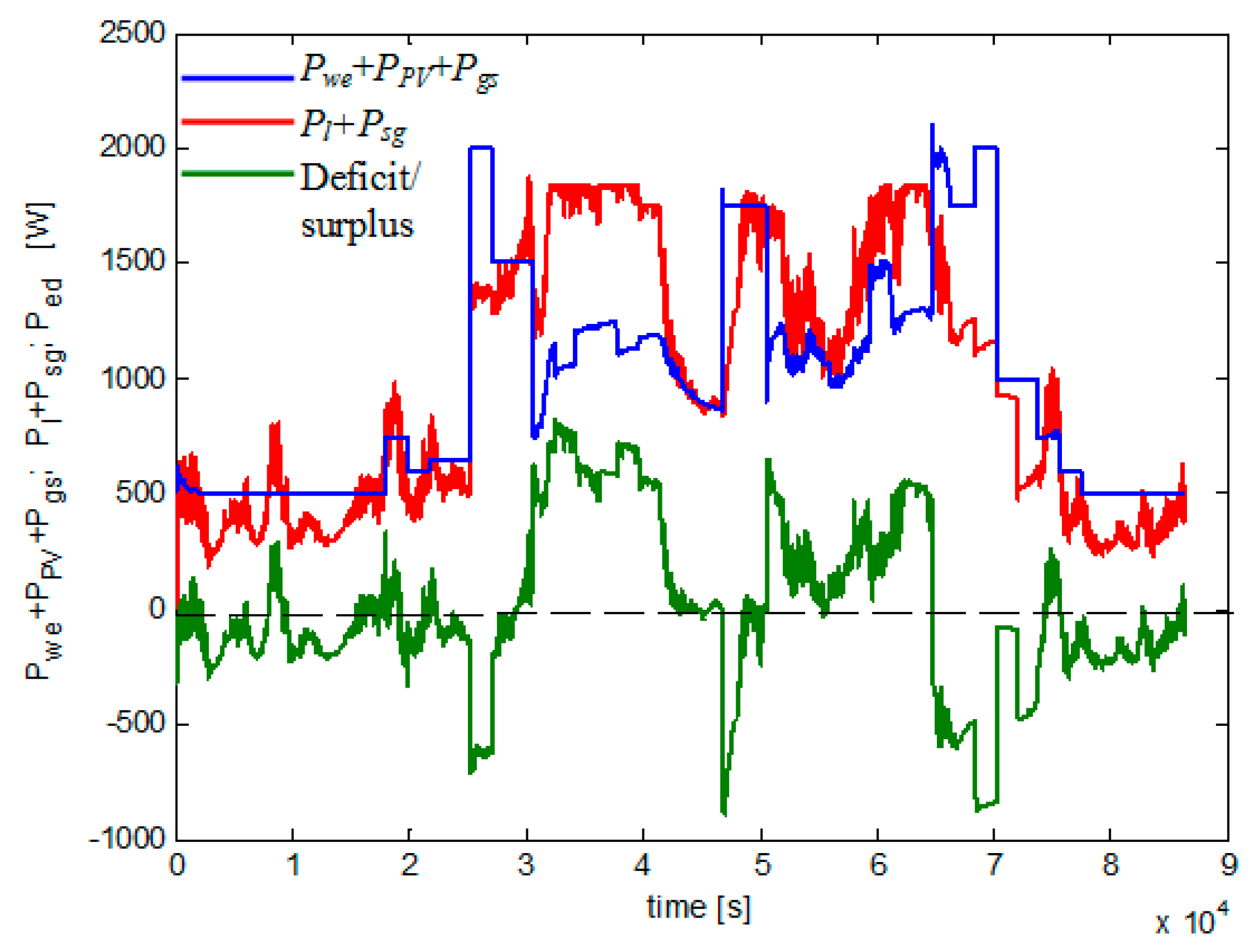

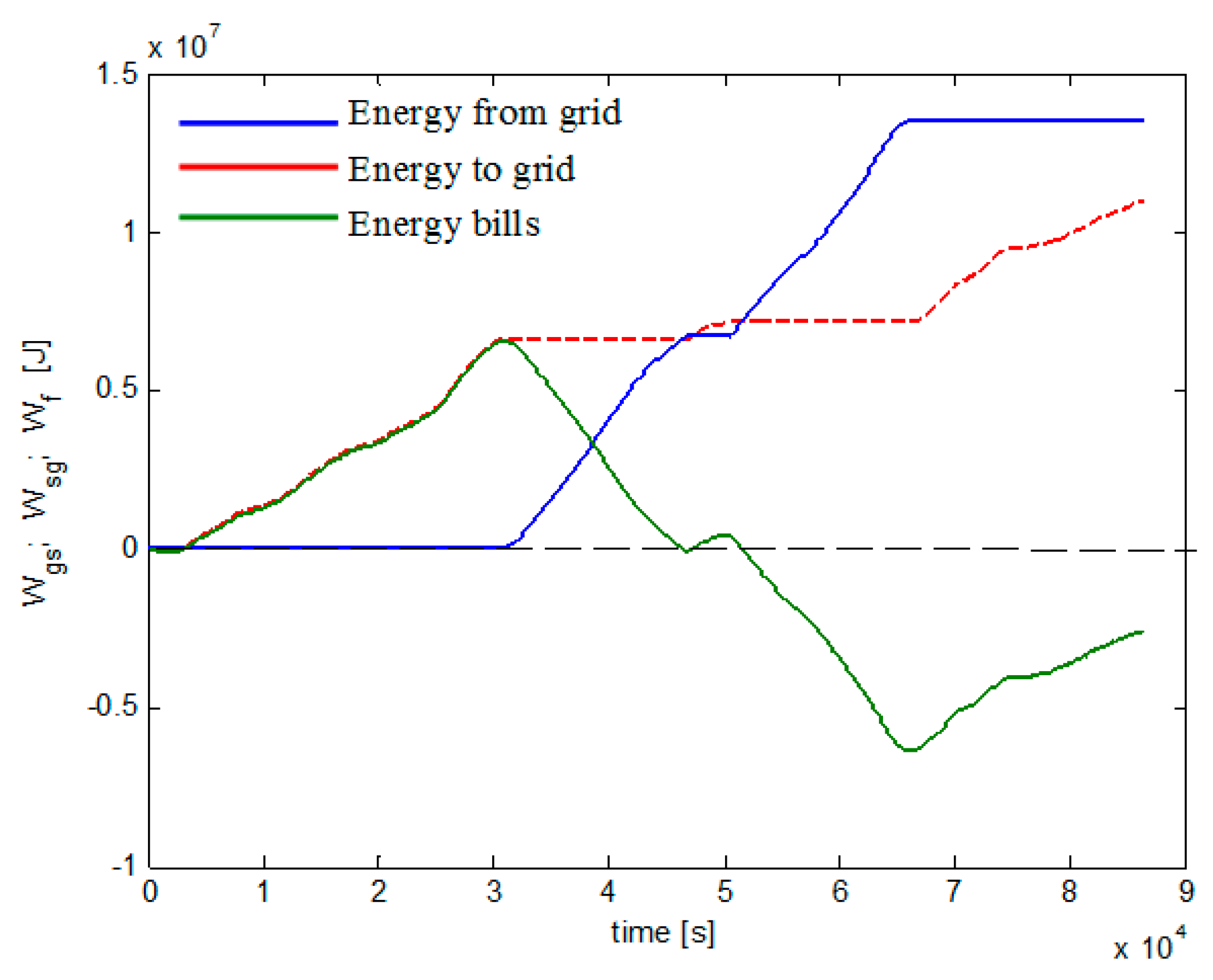
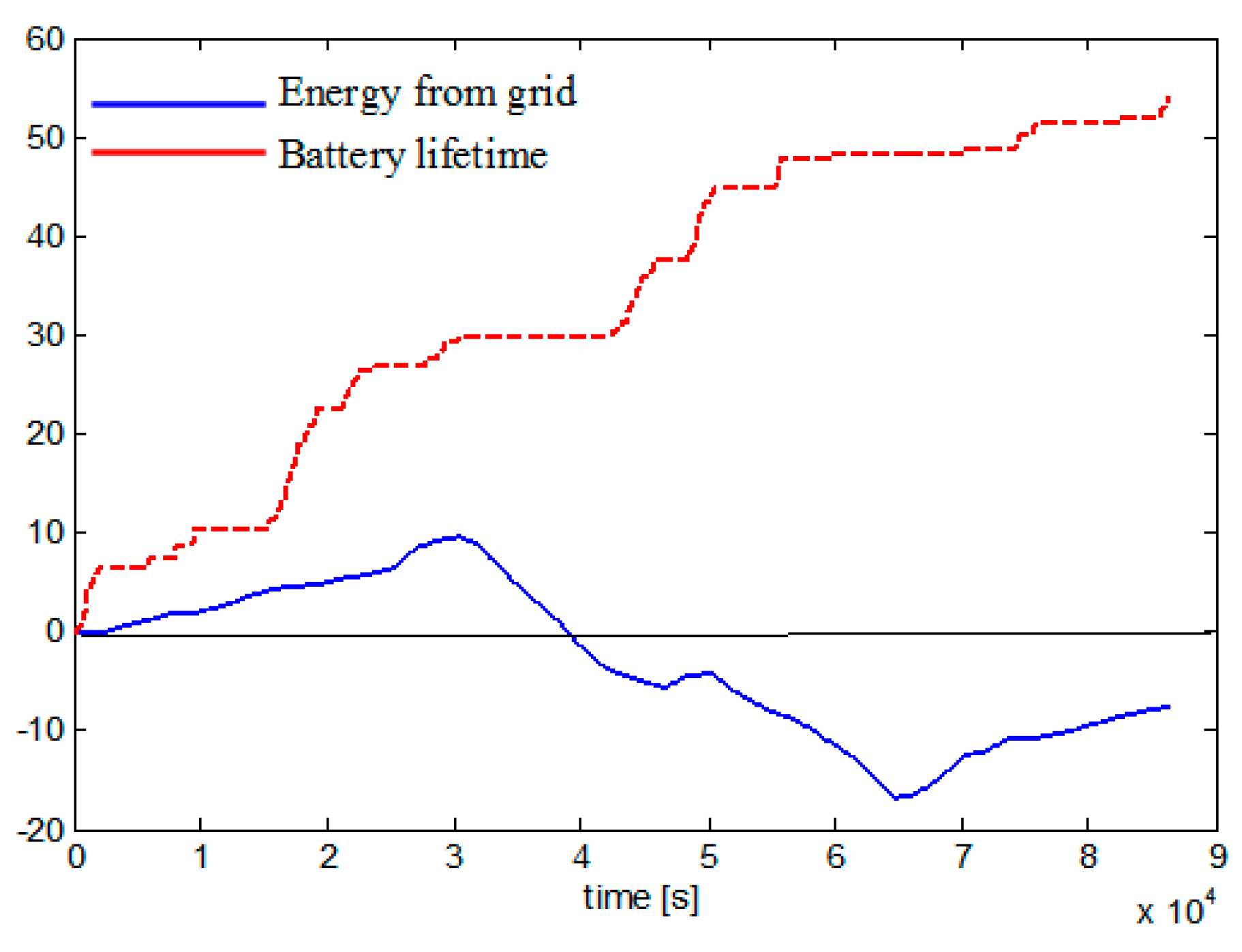
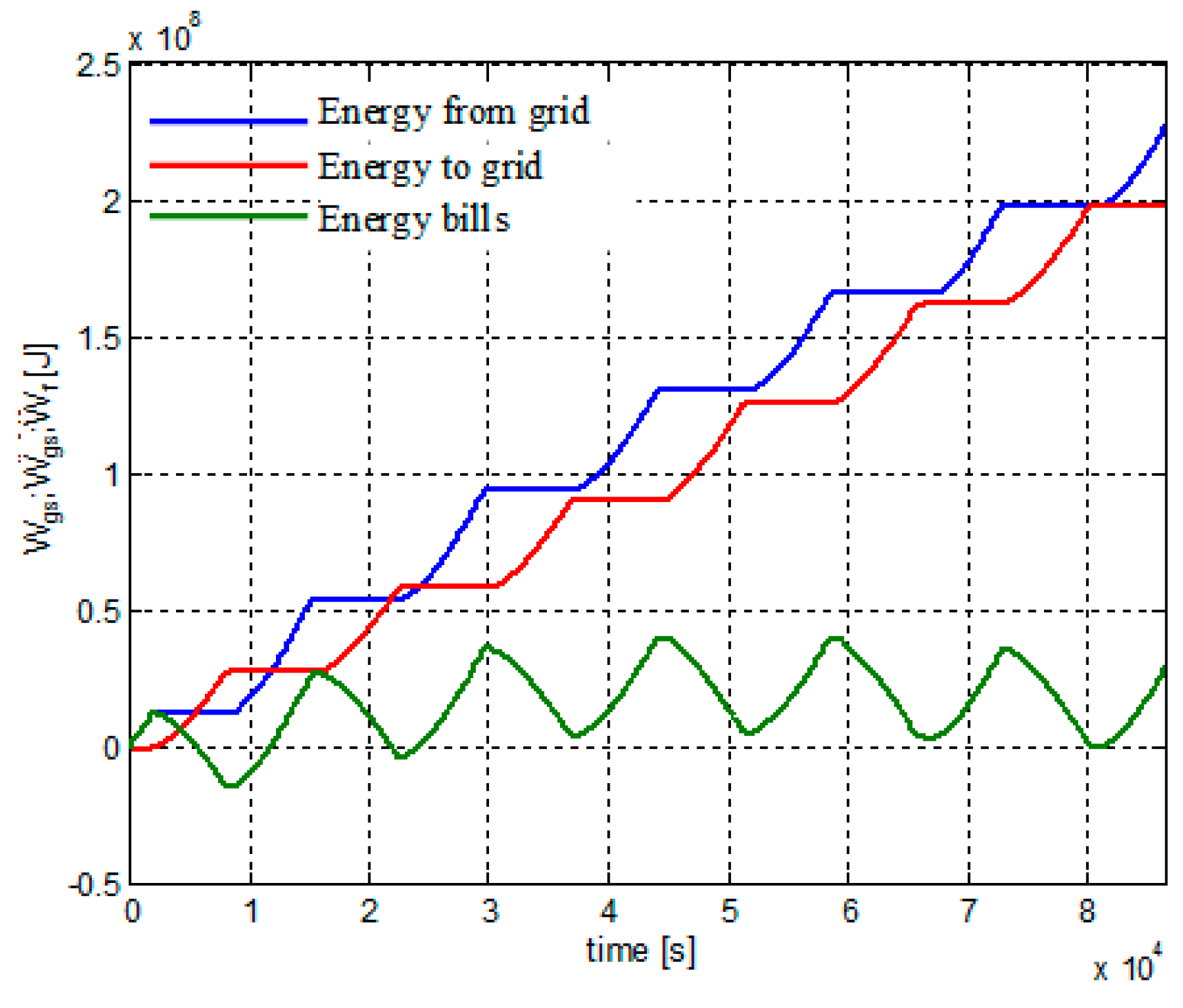


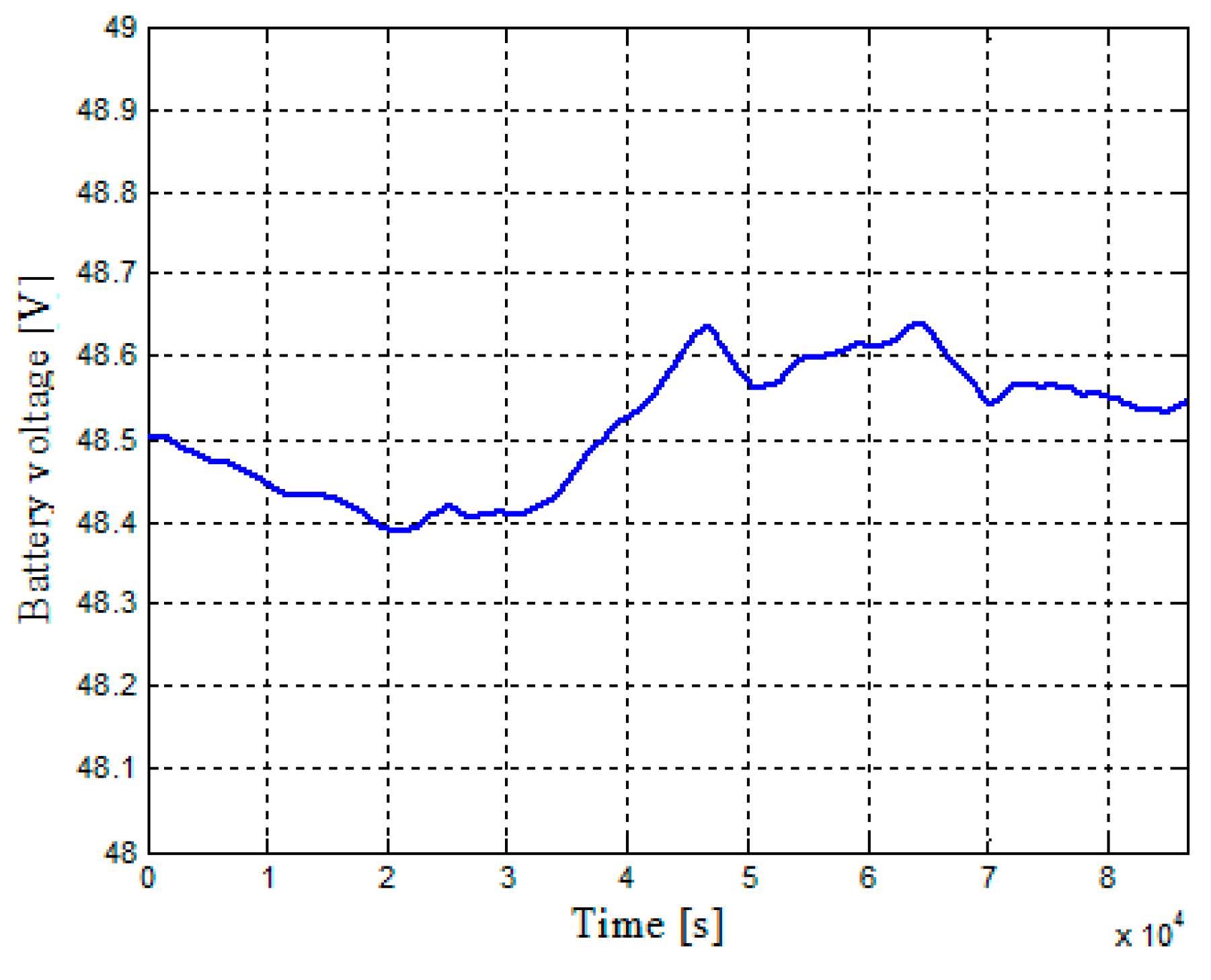

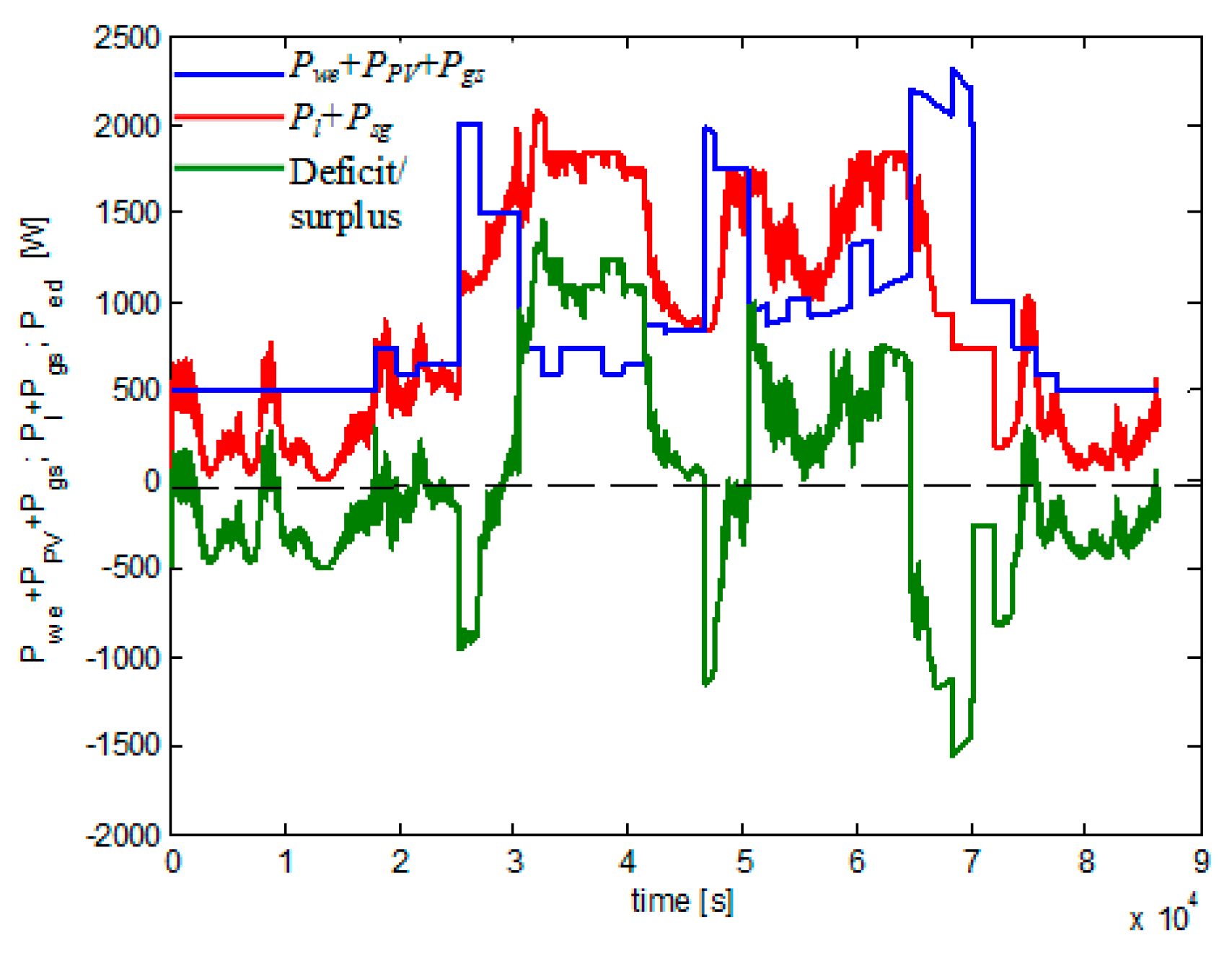
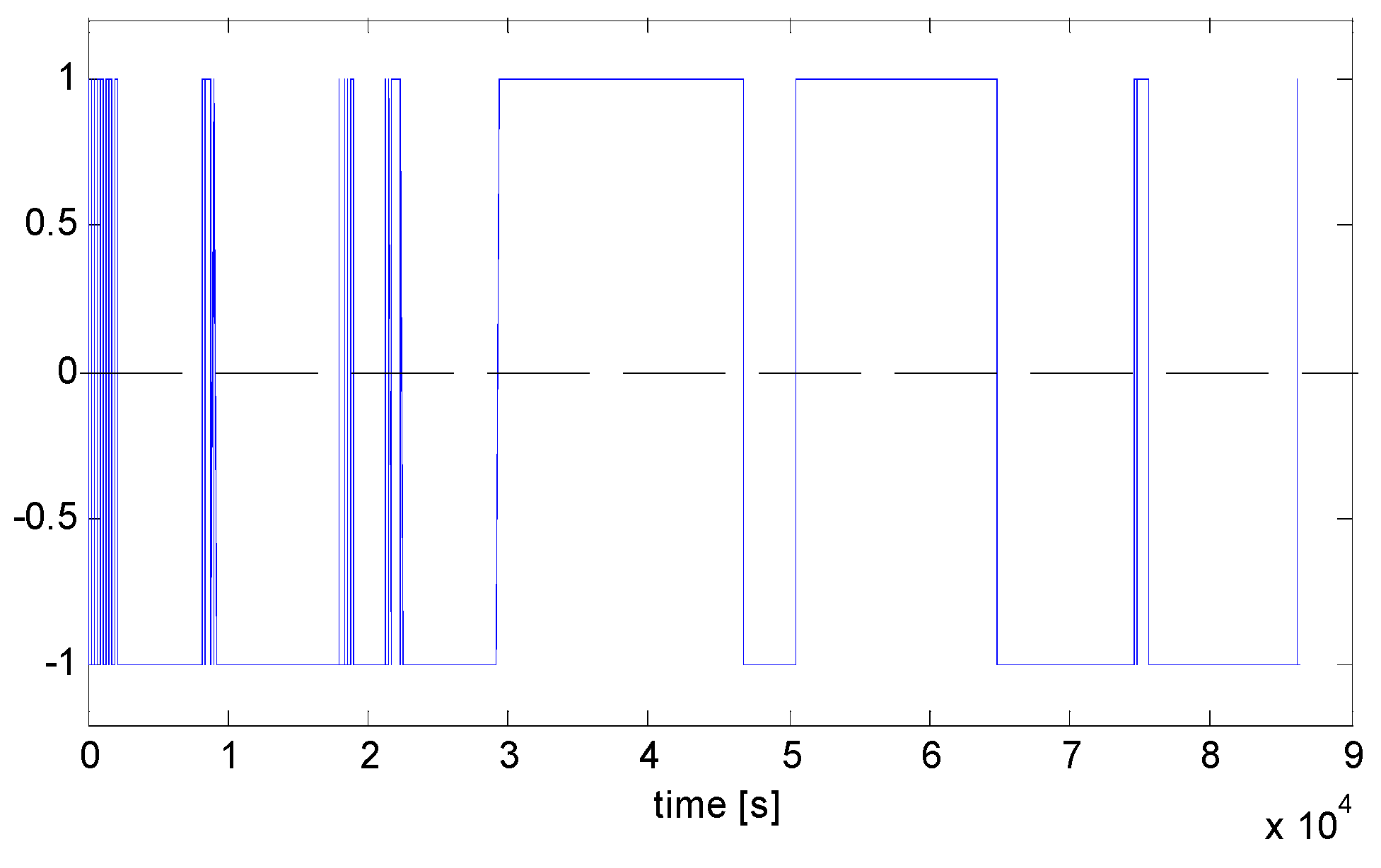

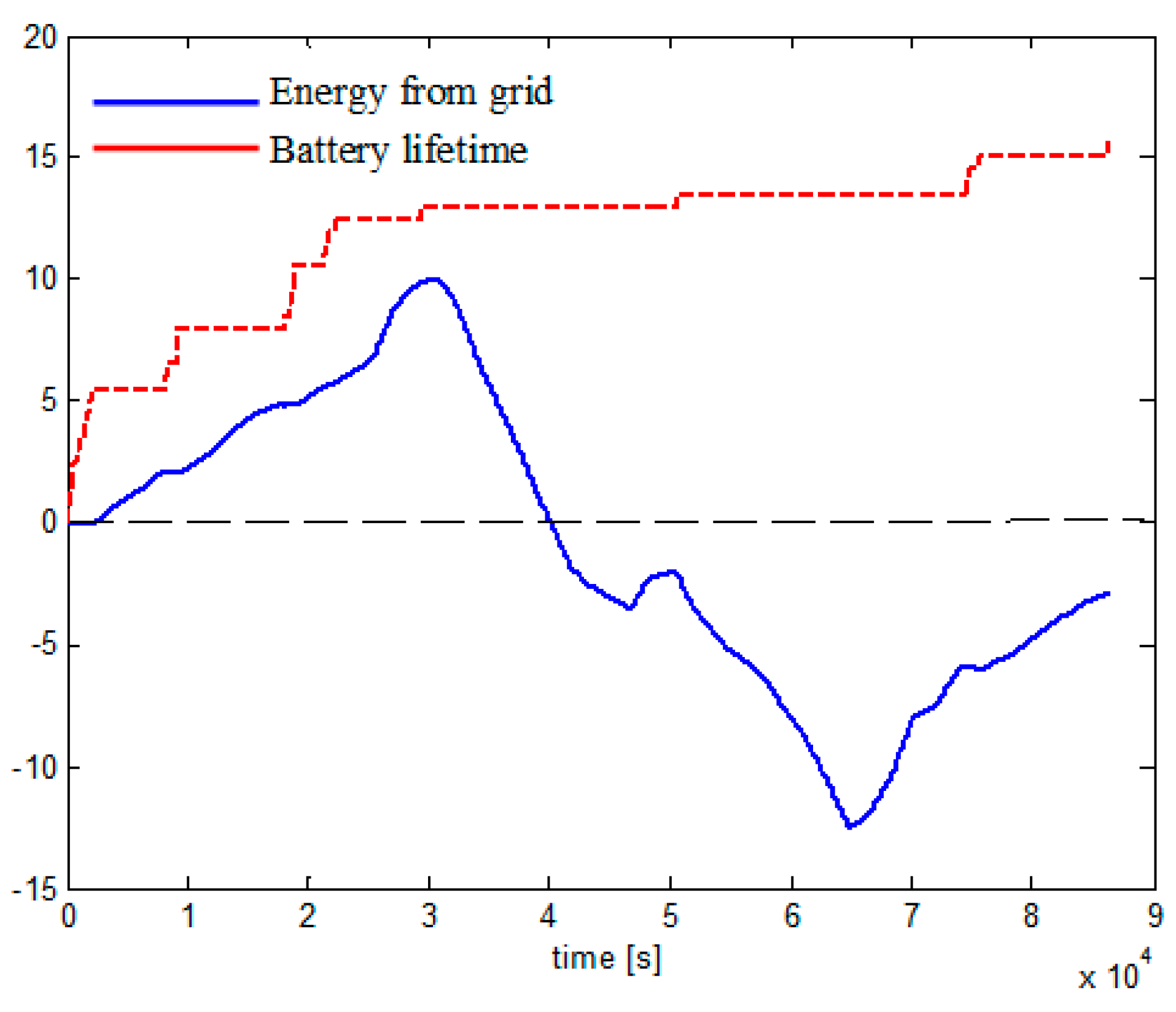
| Time During a Day | Irradiance (W/m2) | Optical Power (kW) | Electrical Power (kW) | Electrical Power Corrected with Temperature (kW) |
|---|---|---|---|---|
| 12 a.m.–6.00 a.m. | 0 | 0 | 0 | 0 |
| 6.00 a.m.–7.00 a.m. | 200 | 3.12 | 0.312 | 0.312 |
| 7.00 a.m.–8.00 a.m. | 800 | 12.4 | 1.248 | 1.248 |
| 8.00 a.m.–11.00 a.m. | 1000 | 15.0 | 1.56 | 1.56 |
| 11 a.m.–4.00 p.m. | 800 | 12.48 | 1.56 | 1.404 |
| 4.00 p.m.–7.00 p.m. | 1000 | 15.0 | 1.56 | 1.56 |
| 7.00 p.m.–8.00 p.m. | 800 | 12.4 | 1.248 | 1.248 |
| 8.00 p.m.–9.00 p.m. | 200 | 3.12 | 0.312 | 0.312 |
| 9.00 p.m.–12.00 a.m. | 0 | 0 | 0 | 0 |
| Vb | ΔV | u | Corresponding Crisp Strategy | |
|---|---|---|---|---|
| S | N | N | PB | C1 |
| S | N | P | PM | C2 |
| S | P | N | PM | C2 |
| S | P | P | Z | C3 |
| M | N | N | PM | C2 |
| M | N | P | Z | C3 |
| M | P | N | Z | C3 |
| M | P | P | NM | C4 |
| B | N | N | Z | C3 |
| B | N | P | NM | C4 |
| B | P | N | NM | C4 |
| B | P | P | NB | C5 |
© 2016 by the authors; licensee MDPI, Basel, Switzerland. This article is an open access article distributed under the terms and conditions of the Creative Commons Attribution (CC-BY) license (http://creativecommons.org/licenses/by/4.0/).
Share and Cite
Vlad, C.; Barbu, M.; Vilanova, R. Intelligent Control of a Distributed Energy Generation System Based on Renewable Sources. Sustainability 2016, 8, 748. https://doi.org/10.3390/su8080748
Vlad C, Barbu M, Vilanova R. Intelligent Control of a Distributed Energy Generation System Based on Renewable Sources. Sustainability. 2016; 8(8):748. https://doi.org/10.3390/su8080748
Chicago/Turabian StyleVlad, Ciprian, Marian Barbu, and Ramon Vilanova. 2016. "Intelligent Control of a Distributed Energy Generation System Based on Renewable Sources" Sustainability 8, no. 8: 748. https://doi.org/10.3390/su8080748
APA StyleVlad, C., Barbu, M., & Vilanova, R. (2016). Intelligent Control of a Distributed Energy Generation System Based on Renewable Sources. Sustainability, 8(8), 748. https://doi.org/10.3390/su8080748








